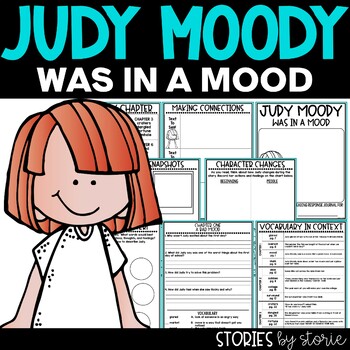


To set you (no pun intended) on the right path, here are a few important questions to consider: For some authors, this will be easy! But for others - especially those who are doing a bit of worldbuilding for a sci-fi or fantasy novel - choosing your setting may be a bit trickier. So before you start writing your story, make sure the setting fits like a glove. The Great Gatsby would not work if it were set during the Great Depression, and it’s almost impossible to imagine most of Zadie Smith’s books taking place anywhere other than London. Let’s talk about setting suitability: as the examples above clearly demonstrate, every great story hinges on setting.
Moods of a story how to#
As an author, don’t just drop a paragraph of scenery description at the beginning and never mention setting again!įor setting to be effective, it needs to filter through the entire story - fortunately, this next section on how to write setting will show you how to do just that. Of course, each of these passages provides only a glimpse of the rest of the book. To arrive at the complex present, she must first acknowledge the past: As part of the novel’s vision of London as a polyphonic city “containing multitudes,” Smith describes the area in terms of both former inhabitants and present-day scenery. But it’s crucial to the narrative that Narnia appears as a still, snowy place that lulls Edmund into a false sense of security just before he meets the Witch:įor a more contemporary example, let’s look at a description of North West London in Zadie Smith’s novel NW.
Moods of a story full#
Lewis introduces Narnia as a winter wonderland full of possibilities - though it’s somewhat deceiving in that the White Witch has cursed the land to eternal cold. Meanwhile in The Lion, The Witch and the Wardrobe, C.S.

Narnia in The Lion, The Witch and the Wardrobe Notice how the narrator, Scout, describes Maycomb as stiflingly humid and old-fashioned, establishing the era's status quo of oppression and suffering: Harper Lee’s unparalleled classic about American race relations in the 1930s takes place in the small town of Maycomb, Alabama. Maycomb, Alabama in To Kill a Mockingbird But just to solidify the notion, here are three particularly strong ones, along with passages to show how each author paints the setting of their story. You can probably think of a dozen more setting examples. Tell us about your book, and we'll give you a writing playlist Note that just as characters can be entire products of an author’s imagination, so often are these individual settings! (The Manhattan Plaza Hotel obviously exists in real life, but the characters’ residences in The Great Gatsby do not.) Authors frequently combine real time, real place, and invented - or at least embellished - individual settings, to ground the story in authenticity while maintaining flexibility on the details. Individual settings: Gatsby’s mansion, Tom and Daisy’s mansion, Myrtle’s apartment, the Plaza Hotel, and more.Environmental setting: southeastern New York - New York City and Long Island.Temporal setting: the American 1920s, right in the heart of the Jazz Age.To demonstrate these concretely, let’s look at the various settings of The Great Gatsby (insert concrete jungle joke here 🏙️). You might think of setting in terms of 3 “types”: temporal, environmental, and individual. Indeed, setting can be so powerful, it may even feel like a character itself! What are the 3 types of setting? This is why romance novels are typically set in small, cozy towns and horror stories in isolated, unnerving places (a Transylvanian castle, a cabin in the woods). Setting serves as the backdrop to everything that happens in a story, and often contributes significantly to its atmosphere. For example, The Martian by Andy Weir is set in space, in the future. Also known as backdrop, a story setting can be drawn from imagination or based on historic events, as well as geographical locations in the real world (such as a specific city, or the house of a character). The setting of a story is a literary device that establishes when and where its plot takes place. She was referring to real-life places, but the same is true of fictional ones - the setting of a story can be just as affecting and memorable as a place you’ve actually visited.īut how do authors choose the right settings for their stories, and what tactics do they use to bring them to life? Find out in this comprehensive guide to story setting, complete with definition, examples, and tips for writing a setting that readers will remember forever! What is the setting of a story? “When you leave a beautiful place, you carry it with you wherever you go,” lifestyle author Alexandra Stoddard once wrote.


 0 kommentar(er)
0 kommentar(er)
